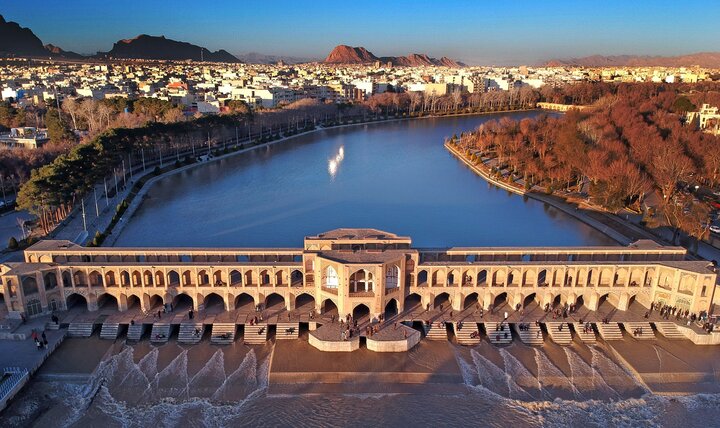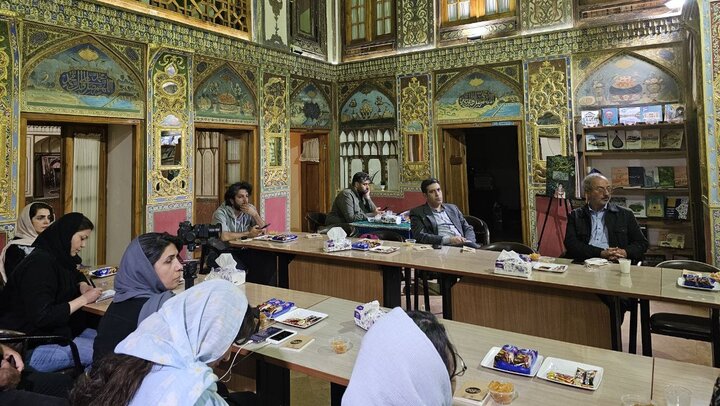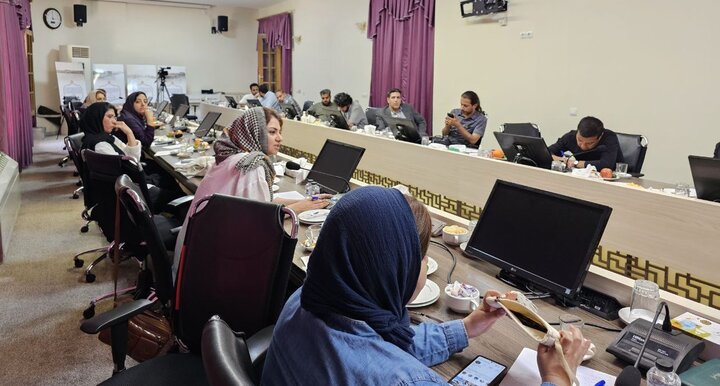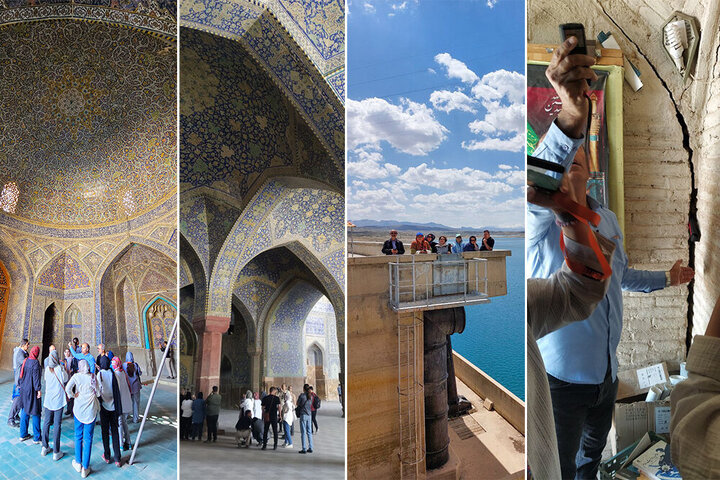Iran (IMNA) - Here, the centuries-old arch bridges of Isfahan, which are masterpieces of Persian architecture standing over 400 years, face a looming threat beyond their thirst: land subsidence!
Our exploration of many of Isfahan’s historical treasures, including the UNESCO-registered Imam Mosque, showed us signs of threats of decay and destruction due to the slight sink of the city’s surface.
What we witnessed in Imam Mosque, in addition to the cracks, was the distortion of the massive stone columns that supported the lofty domes of the mosque. We measured these changes in column shapes using laser devices, which indicated zero at the top of the column and approximately seven centimeters of deviation at the bottom.
To prevent a possible disaster, the ball is now in the Iranian government’s court to take decisive action in safeguarding Isfahan’s matchless heritage. Among other places we visited were Seyyed Mosque and Ali Qoli Agha Mosque, both of which were in poor condition. In the rear hall of Seyyed Mosque, we saw a wide gap several centimeters wide, visible across the mosque floor, as well as on the ceiling, walls, and dome of the mosque.
In Ali Qoli Agha Mosque, some cracks were so large that one could insert their hand inside. Additionally, during our visit to Ejei House, we observed cracks throughout this nineteenth-century structure that are progressive, according to locals.
Our on-site assessment of the water stored in the Zayandeh-Rud Dam reservoir revealed an unfavorable situation. The Zayandeh-Rud remains dry for the majority of the year, resembling more of a dusty path than a flowing river.
As for Zayandeh-Rud’s rich heritage, dryness and the reduction of underground water tables undermine the structural integrity of its historical bridges. Evidence of this grave threat is visible, such as on the walls of Khaju Bridge. However, these signs are occasionally covered, possibly to hide the issue rather than address it.

For Isfahan, this is not a recent issue. Over the past two years, various measures have been initiated by the local government to manage water consumption, but they have not yet yielded satisfactory results.
During our meetings with local experts and academia, it was echoed that water withdrawals exceed the river’s capacity in both provinces. They also highlighted a proposed project to transfer water from the Sea of Oman to alleviate pressure on the Zayandeh-Rud, primarily benefiting industries and factories in Isfahan.

It seems that effective cooperation between Isfahan and Chaharmahal-Bakhtiari is crucial for water management. However, efforts to convene meetings between relevant officials have yielded little progress.
Furthermore, the experts said, despite being home to historical wonders, Isfahan’s per capita water allocation falls well below the national average, underscoring the urgency of addressing water management issues.
In that regard, the Ministry of Interior has pledged joint sessions between the provinces and drafted a cooperation memorandum. However, tangible actions have yet to materialize.
To prevent a possible disaster, the ball is now in the Iranian government’s court to take decisive action in safeguarding this matchless cultural heritage. This may include facilitating collaboration between relevant authorities from Isfahan and Chaharmahal-Bakhtiari provinces, where the Zayandeh-Rud originates.
Here, the government seems to be leveraging its authority to mediate possible disagreements between these neighboring provinces and regulate water withdrawals from the life-giving river.
It is evident that uncontrolled withdrawals, as we witnessed many cases during our field visits, jeopardize the efficiency of this ancient river.

Reforming agricultural practices, controlling countless water extractions from the river, monitoring industrial activities impacting the river, and regulating construction along its banks to prevent sewage contamination are essential measures.
Isfahan, once a bustling hub of international trade and diplomacy in Iran, has transformed into one of the country’s premier tourist destinations for compelling reasons. Filled with architectural marvels, including unparalleled Islamic structures, vibrant bazaars, enriching museums, serene Persian gardens, and picturesque tree-lined boulevards, Isfahan beckons visitors to immerse themselves in its charm. Strolling through its labyrinthine bazaars, lounging in its enchanting gardens, and engaging with its friendly locals offer a glimpse into the rich tapestry of life in this extraordinary destination.
This ancient city has earned the endearing nickname “Nesf-e-Jahan,” meaning “half the world,” reflecting the sentiment that experiencing Isfahan is akin to exploring half of the globe.
Tehrantimes


Your Comment